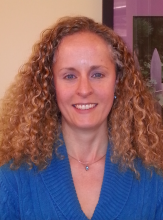From Healthy People 2020 Stories from the Field, a series highlighting communities across the Nation that are addressing the Leading Health Indicators (LHIs).
Colorectal cancer is the fourth most common type of cancer in the United States, and the fourth leading cause of cancer deaths. But although colorectal cancer is very common — and there are effective tests for it — many people in the United States aren’t getting screened.
People may not get screened for a variety of reasons, including procrastination, fear of the procedure, or because they have no family history and assume they’re not at risk. Cost can also be a major barrier, mainly for people who don’t have health insurance.
The Evolution of Colorectal Cancer Screening
Dr. Heather Dacus, DO, MPH, oversees the Bureau of Cancer Prevention and Control within the New York State Department of Health. The Bureau works with contractors and partners to reduce the burden of cancer in New York State using evidence-based strategies, like increasing cancer screening rates.
Targeting people without health insurance is one important strategy for increasing overall cancer screening rates. So the Bureau’s New York State Cancer Services Program (CSP) provides free cancer screening and diagnostic testing to people without insurance — including screening and follow-up testing for colorectal cancer. And with funding from the Centers for Disease Control and Prevention (CDC), the Bureau also supports projects that help health care systems use strategies to get everyone screened — regardless of insurance status.
“Focusing on colorectal cancer screening is important,” Dacus explains. “People generally know about the importance of breast and cervical cancer screening. Now we’re raising awareness about colorectal cancer screening.” This may be especially significant in New York State, where colorectal cancer is the second leading cause of cancer-related deaths.
Local Implementation, Statewide Success
Although the CSP is state and federally funded, the program is implemented at the local level. Local contractors conduct outreach to people eligible for free screenings and partner with screening providers in their communities.
The Bureau also works with Federally Qualified Health Centers (FQHCs) and other primary care practices to improve workflow and implement evidence-based interventions. Keeping the focus local, each participating FQHC tailors its approach to local patient and community needs in order to improve screening rates.
Many organizations support communities in this work. Dacus points specifically to the 22 CSP contractors, as well as partnerships within the New York State Cancer Consortium — including the New York City Department of Health and Mental Hygiene, the Community Health Care Association of New York State, and the American Cancer Society. “We can’t do this alone,” Dacus says. “Local-level implementation and partnerships are critical to each program’s success.”
Facing Challenges Head On
Promoting colorectal cancer screening presents some unique challenges. In addition to cost, many people are wary of colonoscopies, and they may not know that there are other screening options. In every project, Dacus and her team work hard to spread the word about the multiple tests available for screening, and they use research-based messaging in promotional materials to reach target audiences.
When it comes to programs that target health care systems, Dacus notes that there are always competing priorities. That’s why the Bureau offers technical assistance and grant funding when possible. The idea is to make it easier for practices to focus on improving colorectal screening rates.
“Just like colorectal cancer screening, the landscape of medicine is evolving,” she says. “And changes are only sustainable when there are policies and procedures in place to support them. Helping practices with quality improvement, data management with electronic health records, and provider engagement is key to success.”
Success by the numbers
Since the CSP began offering screening for colorectal cancer in 2007:
- More than 60,000 adults without health insurance have been screened for colorectal cancer. Additionally, over 5,500 people with abnormal screening results received a diagnostic colonoscopy at no cost.
- Nearly 10,000 adults at high risk for colorectal cancer got free screening colonoscopies.
And through one FQHC-based project that started in 2016:
- The percentage of patients across 8 practice sites who got screened for colorectal cancer increased from 39.7% to 47.8%.
Striving for 80% Colorectal Cancer Screening Rates
Despite the success of these programs, Dacus stresses that there’s still work to do. The National Colorectal Cancer Roundtable (NCCRT) created the 80% Pledge in 2015 with the goal of getting 80% of people in every community screened for colorectal cancer — regardless of where they live or what they can pay. Thousands of organizations have signed the pledge, including 183 in New York State. The NCCRT’s pledge has been key to engaging partners across New York State including academic institutions, hospitals, and primary care groups to work toward increasing screening rates.
The New York State Cancer Consortium’s Colorectal Cancer Action Team has hosted 7 webinars in the last 3 years to promote screening options and other best practices to state partners. The state also works with local employers to provide paid time off for screening — and with Medicaid managed care health plans to raise awareness about the importance of screening. “There are a lot of moving parts, but these strategies work,” says Dacus.
What’s Next for Colorectal Cancer Screening
While program outcomes and partnership successes are encouraging, New York State and national screening rates remain below 80%. State and local partnerships are critical to reaching the 80% goal, and Dacus stresses the need for continued national focus and state support for colorectal cancer screening provision and promotion.
“Although we may have different ideas on how to reach 80%, we all have the same goal in mind,” she says. “And our continued partnerships will ensure our future success.”




